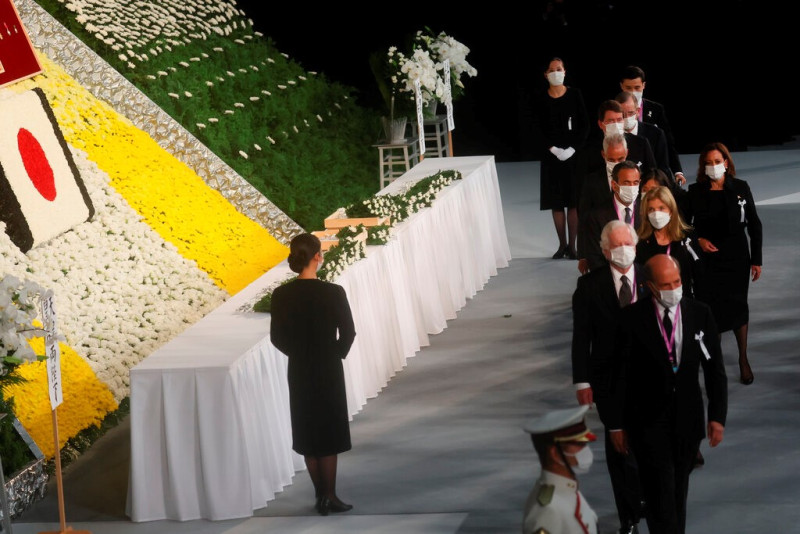His shooting death at an election rally on July 8 at the age of 67 shocked Japan and the world.
The state funeral of murdered former Japanese Prime Minister Shinzo Abe took place today in Tokyo, almost 3 months after his death.
His shooting death at an election rally on July 8 at the age of 67 shocked Japan and the world.
Since the morning, thousands of Japanese have flocked to the Budokan, a venue in the center of the capital where martial arts competitions, concerts and official ceremonies are held, to lay flowers and pay their last respects in front of a portrait of Abe placed on a stage which had been set up for the occasion.
The ceremony began with the arrival of his widow holding the urn with her husband’s ashes.
Akiye Abe, who wore a black kimono, was welcomed by Prime Minister Fumio Abe at around 14:00 (local time, 08:00 Greek time). The former prime minister’s widow carried the urn to the funeral venue, the Nippon Budokan, in front of thousands of guests, Japanese and foreigners.
Kishida’s quick and unilateral decision to hold a state funeral has angered the opposition, which believes such a move should be debated and approved by parliament. Opposition parties boycotted the ceremony.
The cost of the ceremony – estimated at 12 million euros – also caused irritation. After the lapses in Abe’s protection, the government deployed 20,000 police to his funeral ceremony, according to local media.
According to the latest polls, about 60% of Japanese are opposed to holding this state funeral.
Abe remained prime minister longer than anyone else in Japan, more than eight and a half years from 2006-2007 and 2012-2020.
He was the best-known figure in Japanese politics both at home and abroad, with his intense diplomatic activity and the economic policy of fiscal and monetary recovery dubbed “Abenomics”.
But Abe was also hated by many for his ultra-liberal and nationalist views, his willingness to overhaul Japan’s pacifist constitution and his links to numerous political and economic scandals.
The motive of his alleged killer – Abe’s alleged ties to the Unification Church, the so-called “Moon Sect”, which is accused of exerting heavy financial pressure on its members – further tarnished the former prime minister’s image. After his death, revelations about the extent of the ties between this Church and Japanese parliamentarians, especially the right-wing ruling Liberal Democratic Party (PLD), once led by Abe and today led by the current prime minister, have not stopped. whose popularity has decreased since this summer.
RES-EMP
Read the News today and get the latest news.
Follow Skai.gr on Google News and be the first to know all the news.
I am currently a news writer for News Bulletin247 where I mostly cover sports news. I have always been interested in writing and it is something I am very passionate about. In my spare time, I enjoy reading and spending time with my family and friends.











